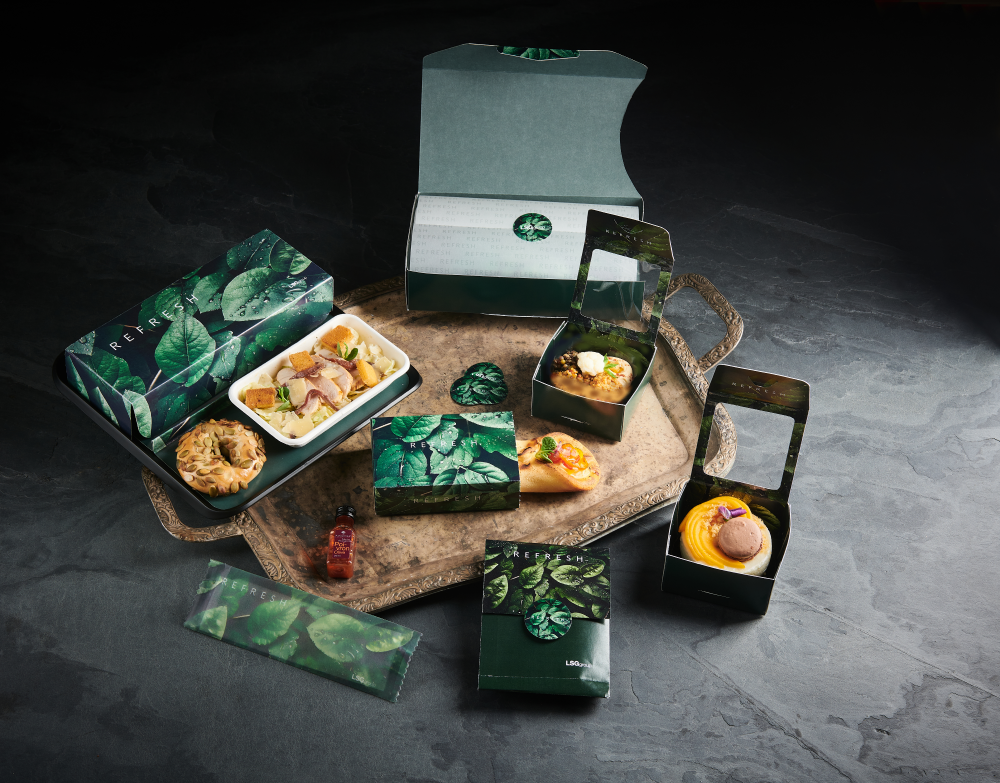PAX Panel: Food production, packaging and presentation
PAX Panel presents the second installment of the virtual roundtable discussion series, featuring representatives from En Route International, LSG Group and dnata
PAX International released today Episode Two of PAX Panel, its virtual roundtable discussion series. Entitled PAX Panel: Food Production, Packaging and Presentation in the Pandemic Era, the episode covers packaging solutions, food concepts and designs, and challenges catering units are facing in the current COVID climate.
In the Panel, PAX International Editor-in-Chief Rick Lundstrom speaks with Martin Hambleton, Head of Procurement, En Route International; Vassilios Georgakopoulos, Director Customer Concepts, LSG Group; and, Alan Hayes, Sales & Managed Services Director, dnata. With new protocols in place and innovations buzzing, the panelists discuss how packaging and other solutions are top of mind – and how the keen eye on sustainability has not been lost.

To no surprise, sustainability remains a major focus for airlines despite the increased demand for disposable products. To deliver this properly, caterers and food packaging suppliers must be more agile, adaptable and flexible than ever.
“It may be a slight misconception that these priorities have gone by the wayside, but there’s without doubt been a shift in focus,” Hayes says. The global outbreak of COVID-19 has seemingly prompted passengers to improve their diet, and as a result, dnata is seeing some very specific healthy dietary trends, he says. And, these trends must be fulfilled in a COVID-secure way: no open food and one-drop solutions to limit crew interaction with passengers.
To support these requests from its customers, En Route International launched light-touch snacking and meal solutions in mid-May. Some boxes include snack, water and hand sanitizer and other boxes include more substantial meal varieties. They are purposely designed to be flexible so that airlines can choose the options that are most suited to their passengers’ behaviors and preferences. The company also rolled out two other ranges, “ovenable” bakery items and a “flip and peel” cheese platter where the lid becomes the plate.
“You have to create something that’s absolutely sustainable in the nature of its packaging itself and also deliver it globally,” explains Hambleton, adding that the company’s goal was reassuring the customer that they were able to deliver a quick and adaptable solution. “That was one of the challenges and I think we rose to that really nicely.”

Products offered by LSG Group, developed in response to the pandemic
LSG Group developed a standardized food and packaging product portfolio that can be used either on its own (disposable) or combined with the existing airline equipment and can be customized on a regional basis. The equipment supports minimal contact with crew and maximum passenger satisfaction.
“Our designed food and packaging solutions have a perception of premium-ness and safety, as it’s important to pacify the customers and [instill] a kind of confidence that the food is wholesome,” says Georgakopoulos.
He also shares some food for thought: perhaps the industry has not effectively communicated to the flying public about the protocols, standards and heavy regulations that caterers and food suppliers are required to follow. Airline food is safe to eat, but some passengers still have a perception that they can get an illness from eating it or that the food is not protected, he says.
The opening of the new dnata unit in Dublin in mid-September came together the same as any other despite COVID-19, Hayes says.
“It’s quite unusual to have a success story in the middle of this crisis,” he says, adding that the project partners worked tirelessly to ensure the pandemic was not an excuse. And in terms of the physical building itself, it was held to the same “incredibly high” controls and design certifications as all of its other units. “Making sure that level of confidence reaches our customers – and that our customers can then talk to their customers – has been a key part of the communication process.”
Meal presentations for airline customers are taking place virtually, without the interaction and tasting that is so important. In-person presentations will come back, says Hayes, because that ties in the emotional aspect of food and the ability, of course, to actually taste it.
“We have been trying to find ways to get the taste profile across and at the moment the customers are understanding the predicament we’re in but appreciating the efforts, so they can still visualize and trust the product to be tasted at the end,” he adds.
Stay tuned for the next installment of PAX Panel, coming soon. All PAX Panel episodes are available online so that everyone can watch and share.


